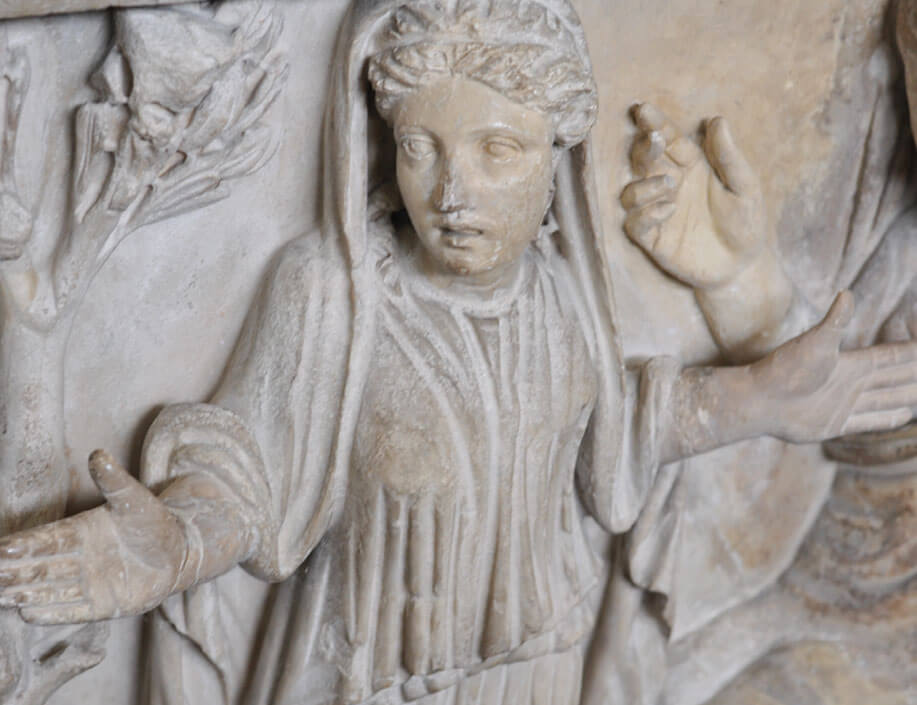
To read the New Testament is to read stories about people of faith praying and struggling together about important and sometimes divisive questions. In the first two sentences in Sunday’s gospel Jesus speaks with urgency first about fire, then about baptism. He wishes the fire he brings to earth were already kindled and his own baptism completed. His words anticipate early Church debates.
When Luke writes in the mid 80s of the first century, Jesus has completed his baptism — his suffering, death, resurrection, and return to God, but he has not come again in glory. Meanwhile Christian faith has spread not only among Jews but among Gentiles and created conflicts. Baptism is one such conflict.
Among Gentiles baptism takes the place of circumcision, the sign for men of Jewish faith. But some of the Pharisees who have become Christians object. They think Gentiles should be circumcised and instructed in keeping the law of Moses.
The first Church council convenes in Jerusalem in AD 49 to discuss and pray about whether Gentiles entering the Christian movement need to be circumcised. Luke tells the whole story in Acts 15.
Both Peter and Paul agree that circumcision is not necessary. The council decides to welcome believers via the ritual of baptism and understands that faith in Jesus circumcises the hearts of believers.
The fire Jesus wishes were already kindled points to this challenge of Jews and Gentiles in Christ working together to reconcile divisions. Fire is a symbol of the Holy Spirit. Early in Luke’s gospel John the Baptist connects fire, Spirit, and baptism when he anticipates one more powerful than he who “will baptize not with water but with the Holy Spirit and fire” (Luke 3.16). On Pentecost the Spirit kindles the fire Jesus brings to earth by setting the tongues of his disciples afire with the good news of his resurrection (Acts 2).
- What today divides the Church as deeply as the question of circumcision divided Jewish and Gentile Christians?
- When have you experienced dissension and division dissipate?
Jesus’ teachings on non-retaliation also cause division among the earliest Christians. Jesus teaches his disciples to love their enemies and do good to those who hate them (Luke 6.27). However, the disciples seem not to take Jesus’ words to heart; in fact, James and John ask Jesus whether they should call on God to destroy the Samaritans, who refuse to receive them in their village (10.29-37).
Women’s leadership becomes a problem as the Christian mission grows and Jesus does not return. The earliest Christians gathered in houses, and women led many of these households. For example, Paul greets Aquila and Prisca and the church at their house (1 Corinthians 16.19). Paul commends Phoebe, deacon of the Church at Cenchreae (Romans 16.1).
In Acts 9.36-42, Peter restores a disciple named Tabitha to life. A whole household of widows surrounds her in this account. Paul greets Junia and Andronicus, a woman and man who are apostles in Romans 16.7.
Some leaders, such as the person scholars refer to as “the Pastor” in 1 Timothy 2.11-12, think women should not have leadership positions in the churches.
The gospel anticipates dividing fires will persist. Every election season lights fires and puts Catholic social teaching to work. Who includes the least in their vision of economic life? Who values the family and puts people to work? Who listens and learns as well as speaks and stands up for their constituents? Who can negotiate for the common good?
- What value do you experience in talking about difficult, even divisive, questions?

Selling new products and sales usually means comparing old and new. Sharpening differences creates a threshold for making a choice and a sale. Either-or thinking works great for sales.
As young people, we typically use either-or thinking in developing a self and an identity. In this process many young people distance themselves from institutional religion and identify as “nones,” nonaffiliated. Certainly, the sex abuse scandals have put off many young Catholics, who also accept and make room in their lives for LGBTQ and transgender people.
Both-and thinking and practice works better in building community, welcoming all, honoring cultural differences. Both-and acknowledges the limits of each person’s experience and works intentionally to know many other people unlike one’s self. Both-and thinking requires a secure self to risk going beyond the familiar.
- When have you learned from someone unlike yourself in race, social class, culture, education?
